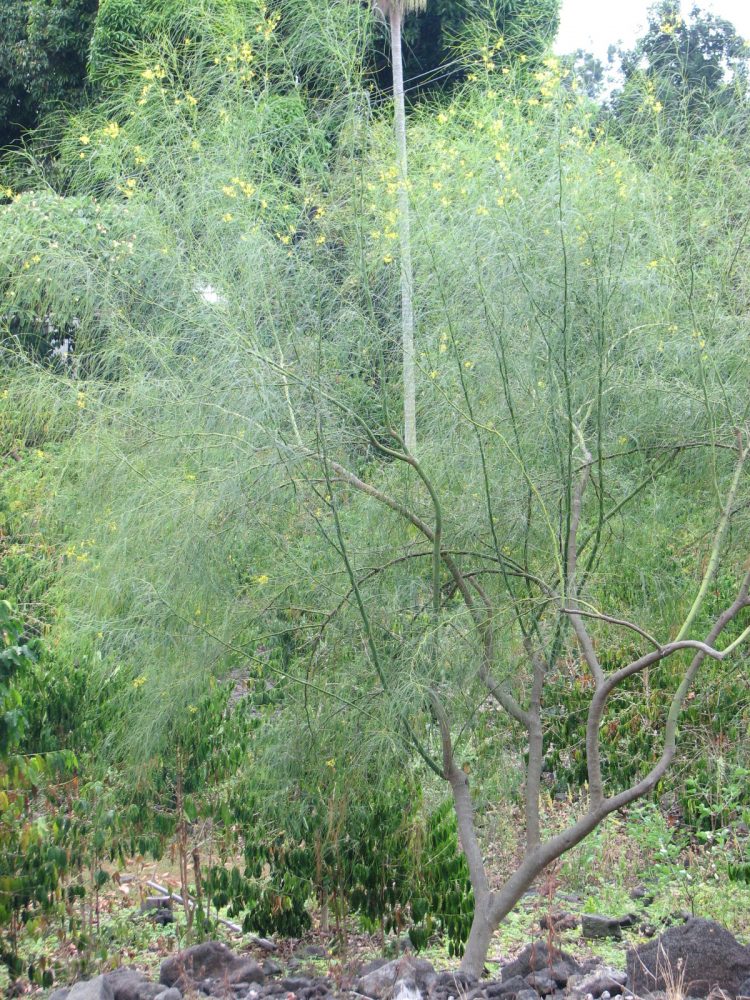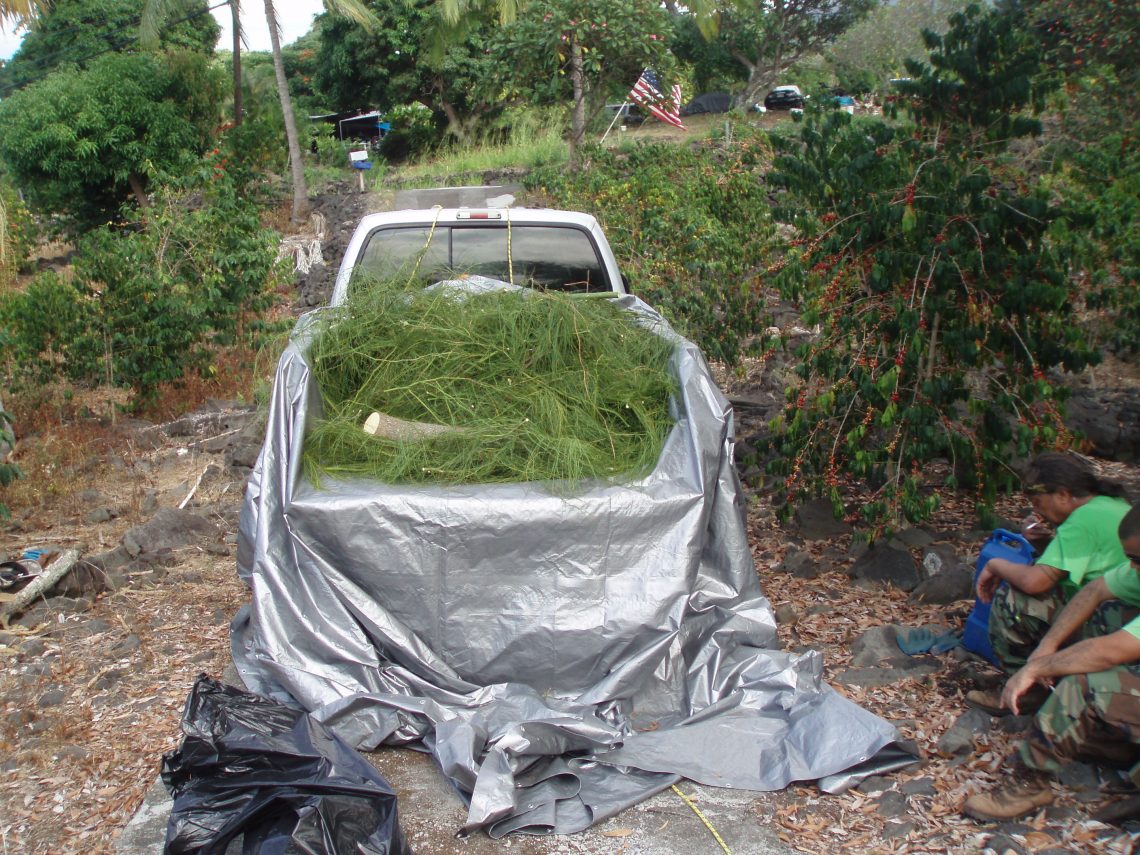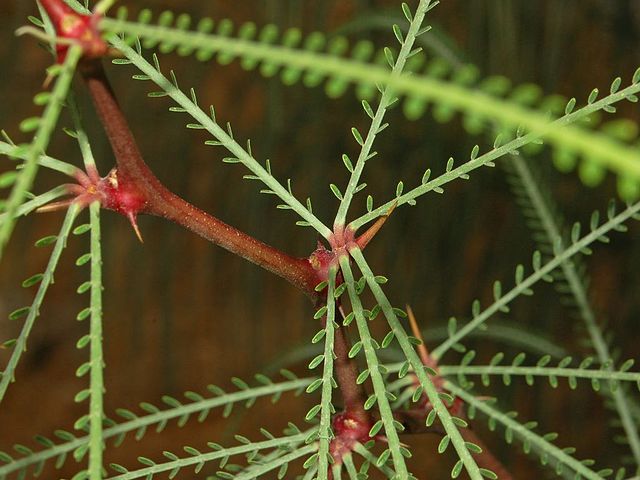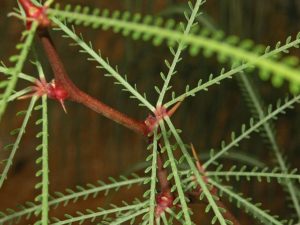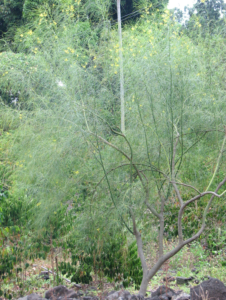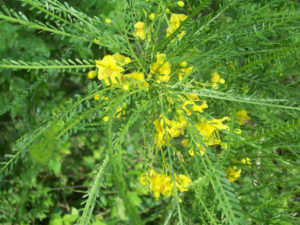Jerusalem thorn, palo verde (Parkinsonia aculeata)
Eradicated!

Family: Fabaceae HPWRA Score 20: High-Risk
Native to the West Indies and South America, palo verde was introduced to Hawaii before 1920. Original plantings included both Sand and Quarantine Islands in the Honolulu area. The trees aggressive growth was noticed by the territorial forester, eradication ensued and was successful. Through new introductions at a later date, palo verde became naturalized in Kauai, Maui, and Oahu. Palo verde is listed as invasive in 13 states, in Australia, Mexico, Cuba, and parts of Europe.
Description:
- A shrubby tree that grows up to 30 feet tall
- the smooth, green branches have many thorns
- leaves are long, thin, olive green, needle-like and grow to 10″ in size
- leaves appear feathery, consist of up to 30 leaflets to make up 1 true leaf
- flowers are yellow with orange-red spots in color, are five-petaled and hang in loose clusters
- seed pods are purplish-brown, 6″ long, and contain small dark brown seeds
Harm:
- Grows rapidly to reproductive maturity
- Forms dense impenetrable thickets
- Thorns make mechanical eradication difficult
- Outcompetes native plants, especially in dry areas
- Seeds are capable of long-distance dispersal thru water during flood conditions and along waterways
- Accidental introduction can occur on muddy boots, muddy animals, and machinery
- Blocks waterways in dry areas
- Humans disperse over extremely long distances
- 1 tree can make up to 5,000 seeds in a year, remaining viable yet dormant for years in the soil
In Hawai’i:
- Oahu – eradicated
- Hawai’i Island – eradicated
ERADICATION SUCCESS!
[one-third-first]
[/one-third-first]
[one-third]
[/one-third]
[one-third]
[/one-third]
